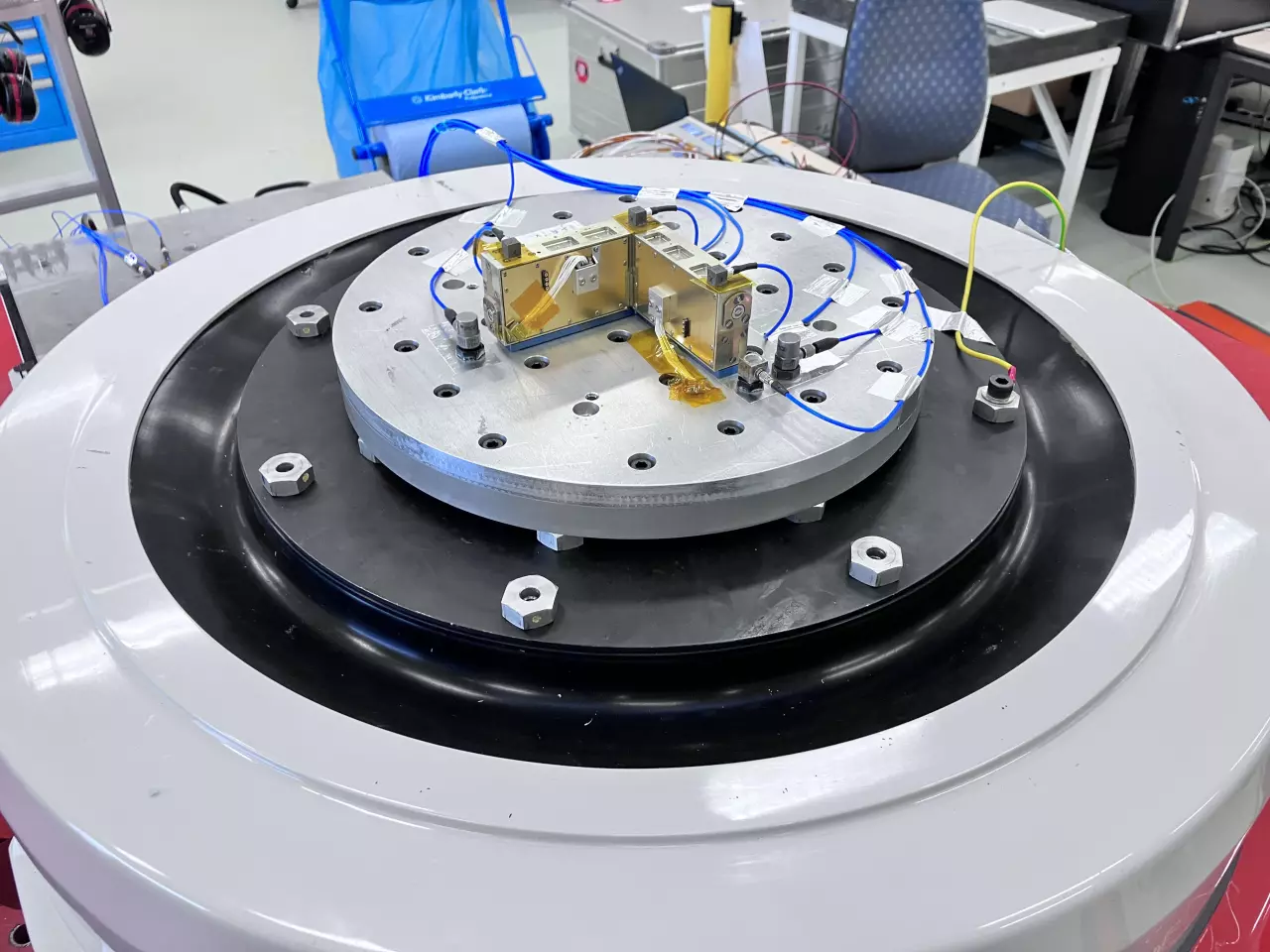When ESA's Juventas CubeSat lands on Dimorphos in 2026 to assess the aftermath of last year's spectacular collisions with NASA's DART spacecraft, its GRAvimeter for small Solar System bodies (GRASS) instrument will directly measure the asteroid's gravitational pull, which is a millionth that of the Earth.
In September 2022, NASA's Double Asteroid Redirection Test (DART) rammed into Dimorphos, which orbits around the larger asteroid Didymos, as part of an experiment to learn more about how to deflect potentially dangerous celestial bodies before they reach Earth. This was only half of the job, with ESA's robotic Hera mission tasked with assessing the aftermath of the cosmic collision.
Part of this effort includes the Juventas CubeSat, which is about the size of two loaves of bread, that will be deployed from the Hera deep-space probe and land on Dimorphos. Among its small suite of instruments is the GRASS gravimeter, developed by the Royal Observatory of Belgium (ROB) with Spain’s EMXYS company that is currently completing preflight tests at the space agency's Mechanical Systems Laboratory to determine its ability to withstand launch vibrations and the hostile environment of space.

Roughly the size of a pair of smartphones, GRASS is designed to measure the gravity of Dimorphos. This requires a high degree of sensitivity because the asteroid is only about the size of the Great Pyramid of Giza in Egypt. It does this by means of two sets of thin plates anchored in continuously rotating cradles. If the motions of these blades change in the slightest, this changes the electrical voltage in the blades and the walls that surround them.
According to ESA, this gives GRASS a sensitivity equivalent to a micrometer during the 20 hours of battery life it will have after the landing, which is likely to block Junentas's solar panels. During its time on the asteroid's surface, GRASS will not only be able to measure the local gravity, but also any shifts in the CubeSat's position.
"It may be small but GRASS is packed with complex mechanical parts and electronics," said Jose Carrasco, overseeing the instruments at EMXYS. "We’re very happy with its endurance during the test campaign. We will now follow up with a full integrity test to ensure it has sustained no damage during the testing, after which it will be passed to the GomSpace company in Luxembourg for integration aboard Juventas."
Source: ESA












